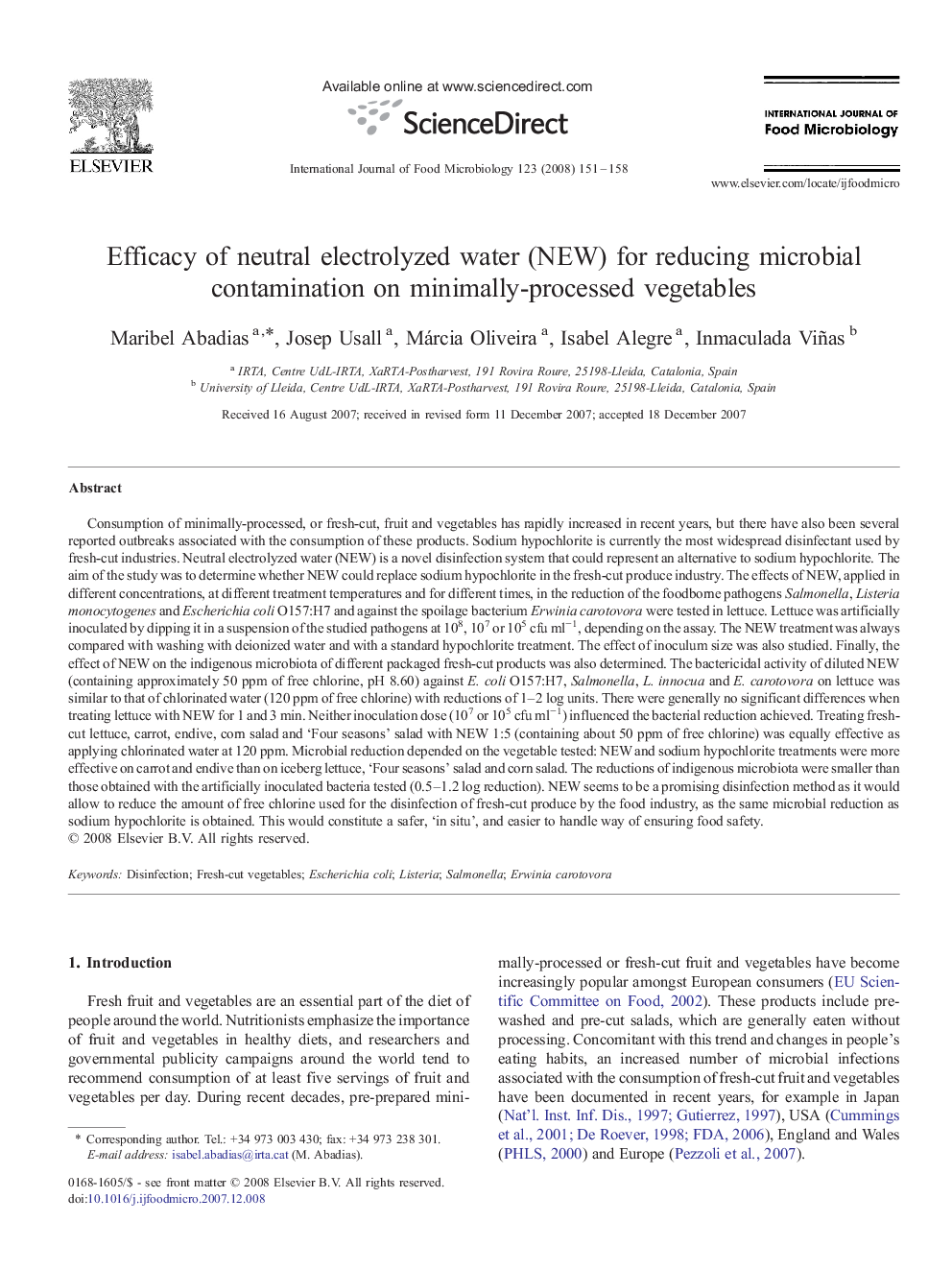| کد مقاله | کد نشریه | سال انتشار | مقاله انگلیسی | نسخه تمام متن |
|---|---|---|---|---|
| 4368672 | 1616729 | 2008 | 8 صفحه PDF | دانلود رایگان |

Consumption of minimally-processed, or fresh-cut, fruit and vegetables has rapidly increased in recent years, but there have also been several reported outbreaks associated with the consumption of these products. Sodium hypochlorite is currently the most widespread disinfectant used by fresh-cut industries. Neutral electrolyzed water (NEW) is a novel disinfection system that could represent an alternative to sodium hypochlorite. The aim of the study was to determine whether NEW could replace sodium hypochlorite in the fresh-cut produce industry. The effects of NEW, applied in different concentrations, at different treatment temperatures and for different times, in the reduction of the foodborne pathogens Salmonella, Listeria monocytogenes and Escherichia coli O157:H7 and against the spoilage bacterium Erwinia carotovora were tested in lettuce. Lettuce was artificially inoculated by dipping it in a suspension of the studied pathogens at 108, 107 or 105 cfu ml−1, depending on the assay. The NEW treatment was always compared with washing with deionized water and with a standard hypochlorite treatment. The effect of inoculum size was also studied. Finally, the effect of NEW on the indigenous microbiota of different packaged fresh-cut products was also determined. The bactericidal activity of diluted NEW (containing approximately 50 ppm of free chlorine, pH 8.60) against E. coli O157:H7, Salmonella, L. innocua and E. carotovora on lettuce was similar to that of chlorinated water (120 ppm of free chlorine) with reductions of 1–2 log units. There were generally no significant differences when treating lettuce with NEW for 1 and 3 min. Neither inoculation dose (107 or 105 cfu ml−1) influenced the bacterial reduction achieved. Treating fresh-cut lettuce, carrot, endive, corn salad and ‘Four seasons’ salad with NEW 1:5 (containing about 50 ppm of free chlorine) was equally effective as applying chlorinated water at 120 ppm. Microbial reduction depended on the vegetable tested: NEW and sodium hypochlorite treatments were more effective on carrot and endive than on iceberg lettuce, ‘Four seasons’ salad and corn salad. The reductions of indigenous microbiota were smaller than those obtained with the artificially inoculated bacteria tested (0.5–1.2 log reduction). NEW seems to be a promising disinfection method as it would allow to reduce the amount of free chlorine used for the disinfection of fresh-cut produce by the food industry, as the same microbial reduction as sodium hypochlorite is obtained. This would constitute a safer, ‘in situ’, and easier to handle way of ensuring food safety.
Journal: International Journal of Food Microbiology - Volume 123, Issues 1–2, 31 March 2008, Pages 151–158